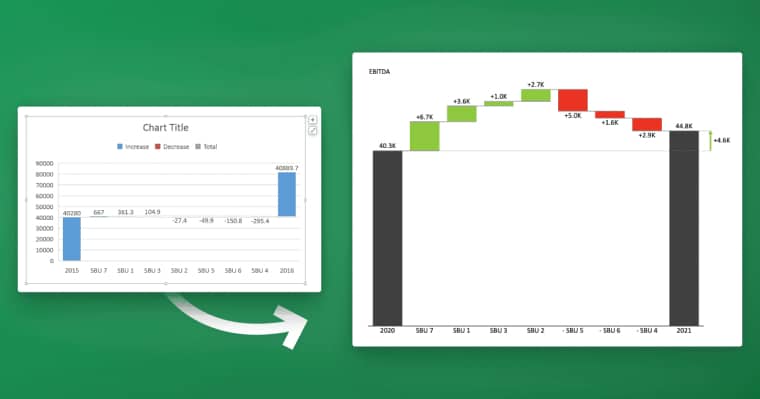If you want to add a trendline to your chart in Power BI, you’re in the right place. Trendlines are essential to data visualization, helping you identify patterns and make informed decisions.
Table of Contents
In this article, we’ll take an in-depth look at how to add trendlines to your charts in Power BI and explore the different types of trendlines, how to customize settings and troubleshoot common issues.
What is a Trendline, and Why is it Useful in Data Visualization?
Before diving into the details of adding trendlines in Power BI, let’s first explore what a trendline is and why it’s useful. A trendline is a straight line calculated from a series of data points, typically used to show the general direction of data trends. When used in data visualization, trendlines can help to identify patterns or changes over time, making it easier to spot trends and make data-driven decisions.
Additionally, trendlines can be used to forecast future trends based on historical data. By extending the trendline beyond the current data points, analysts can predict future trends and adjust their strategies accordingly. This can be particularly useful in industries such as finance and marketing, where accurate predictions can lead to significant gains.
Understanding the Different Types of Trendlines in Power BI
Power BI offers several trendlines you can add to your charts, each with a specific purpose and uses. These include:
- Linear trendline: A straight line that shows a constant increase or decrease in data over time.
- Logarithmic trendline: A best-fit curved line that is most useful when the data change rate increases or decreases quickly and then levels out.
- Polynomial trendline: A curved line that shows a more complex relationship between data points.
- Power trendline: A curved line best used with data sets that compare measurements that increase at a specific rate.
- Exponential trendline: A curved line that shows exponential growth or decay over time.
- Moving average trendline: it smoothes out fluctuations in data to show a pattern or trend more clearly.
Understanding these trendlines’ differences is crucial to ensure you choose the right one for your data visualization needs.
Step-by-Step Guide to Adding a Linear Trendline in Power BI
Now that you understand the different trendlines available in Power BI let’s dive into adding a linear trendline to your chart.
Here are the steps:
- Select the visual you want to add a trendline to.
- Go to the “Analytics” pane.
- Toggle “Trendline” from the menu.
- Adjust the settings, such as line color and style, as desired.
Note: You can only add a linear trendline to specific visualizations in Power BI: Clustered column chart, Line chart, Area chart, Line and clustered column chart, and Scatter chart. Also the X–axis must have numeric values.
It’s important to note that adding a trendline can help you identify patterns and trends in your data. A linear trendline is handy when you want to see how your data is changing over time. By adding a linear trendline, you can easily see if your data increases or decreases over time and how quickly it is doing so.
How to Customize Trendline Settings for Better Analysis in Power BI
Adding a trend line to your chart is just the beginning. You’ll want to customize the settings to get the most out of your trendline. Power BI lets you customize various aspects such as line color, thickness, and style. Tinkering with these settings can help you better understand your data and make the trendline easier to understand.
One crucial aspect to consider when customizing trendline settings is the type of trendline you want to use. Power BI offers several options: linear, exponential, logarithmic, power, moving average, and polynomial trendlines. Each type of trendline has its strengths and weaknesses, and choosing the right one can make a big difference in your analysis.
Using Advanced Analytics to Add Polynomial or Exponential Trendlines in Power BI
While linear trendlines help show a simple data trend, more complex data needs more advanced analytics. Polynomial and Exponential trendlines are better suited for different types of data than linear trendlines. These trendlines can be added by following similar steps to adding a linear trendline but require specific criteria to be met that differ by each trendline individually.
Tips and Tricks for Interpreting Trendlines in Power BI Charts
Knowing how to interpret them correctly is essential once you’ve added and customized your trendlines. Here are some tips and tricks:
- Interpret the slope: A positive slope indicates an increase in the trend, while a negative slope indicates a decreasing trend.
- Consider the forecast: Trendlines can be used to forecast future values. However, be cautious about using this method for extended periods, as it may not consider external factors.
Another essential factor to consider when interpreting trendlines is the data range. Ensuring that the trendline is based on sufficient data to make accurate predictions is crucial. Additionally, it’s essential to remember that trendlines are only as reliable as the data they are based on. Therefore, ensure that your data is accurate and up-to-date before creating trendlines.
Troubleshooting Common Issues When Adding Trendlines in Power BI
Like any data analysis tool, Power BI can occasionally present some issues. The most prevalent are the requirements for every type of trendline not mentioned in Power BI directly. Some of these are:
- To have a numerical X-axis for a linear trend chart.
- To have one of your axis logarithmic for a logarithmic trendline.
- Not all chart types can show trendlines.
If you experience these issues, you can change the trendline type, adjust the settings, or select a different data source.
Another common issue when adding trend lines in Power BI is that the trend line is not updating with new data. This can happen if the data source is not set to refresh automatically. You can go to the data source settings to fix this issue and enable automatic refresh. Additionally, you can manually refresh the data source by clicking on the “Refresh” button in the Power BI ribbon.
Best Practices for Using Trendlines to Communicate Insights with Your Team
Finally, we’ll explore some best practices for using trendlines to communicate insights with your team:
- Please choose the correct trend line: Ensure it accurately reflects the data and its patterns.
- Use annotations: Annotations can help to highlight changes in trends, patterns, or significant data points.
- Choose appropriate colors: Ensure that your trend line color is distinct from the chart colors, making it easy to distinguish.
Another best practice for using trendlines is to consider the audience you are presenting to. Suppose your team is not familiar with statistical analysis. In that case, it may be helpful to briefly explain what a trendline represents and how it can be used to identify patterns in data.
It is also essential to regularly update your trendlines to reflect the most recent data accurately. Outdated trendlines can lead to incorrect conclusions and miscommunication of insights to your team.
Top Tools and Resources for Learning More About Adding Trendlines in Power BI
Finally, plenty of resources are available to learn more about adding trendlines in Power BI. The Power BI community offers excellent resources, including forums, blogs, and video tutorials.
And don’t forget to subscribe to our Zebra BI YouTube channel.
In conclusion, adding trendlines to your charts in Power BI is a great way to make data-driven decisions and communicate insights with your team. With this step-by-step guide and the tools and resources available, you’ll be an expert in no time.














